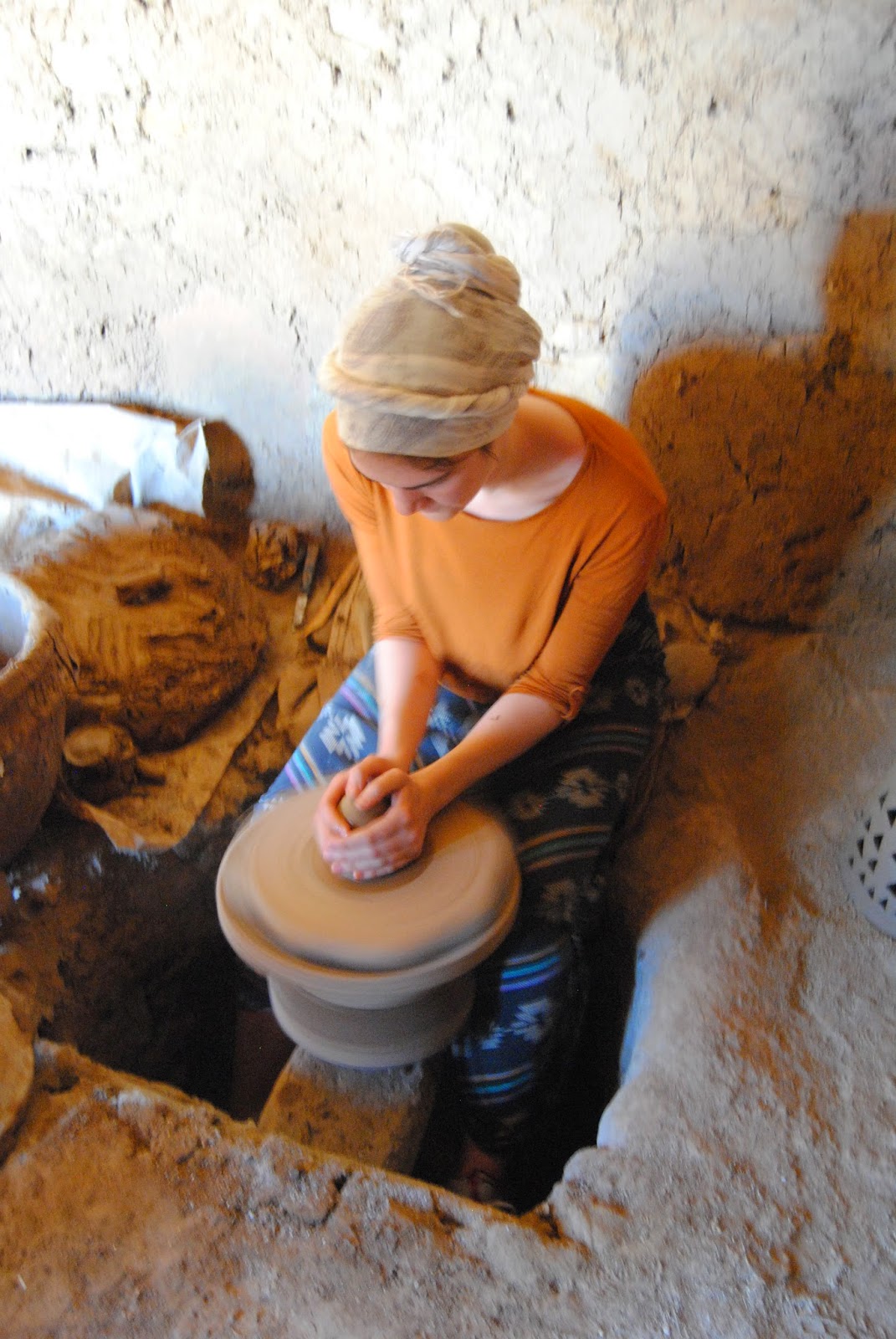unfortunately many were severely damaged by a rainstorm last year. The houses were made of mud and straw and other various materials such as rock and even trash from the nearby area.
The first house we visited was where a woman who made soap lived. I bought 2 soaps from her, one lavender and one olive and argon oil. The house was very interesting to walk though. The woman's husband was there fixing walls while she was cooking. We sat in the open outside area in the center of the house. Surrounding the outside area were entrances to various rooms such as bedrooms. The doors to these rooms were covered with either cloth or metal sheets. We did not see all of the rooms, and some of the areas were open with no ceiling. The first open area had a dirt floor while the second open area had a solid floor. In the second area was a lemon tree with basil plants. The home
even had a private hamam that consisted of two rooms. The first room had a small area for a fire, and the second room had a small door that you had to crouch very low to enter, this is where you would wash. Near the hamam was an area where the family kept their animals. There were chickens and a rooster, as well as one donkey. The animals were kept in this room by a simple door thatched together with branches and mesh.
The second village that we visited was only about 500 feet away. This was a village that made pottery for themselves and for the surrounding villages.
The first thing we saw upon entering the village was a giant kiln, and hundreds of pieces of broken pottery laying nearby as well as fire wood. The kiln is filled with pottery once or twice a week, and then then is covered with the broken pottery in order to seal the kiln as the fresh pottery bakes. While in the village, we had the opportunity to go into a small house where there were two men throwing pottery on the wheel. The wheels are foot powered, and are set low into the ground. The wheels spin with a kick of the foot. The men sat on the floor with their feet in the hole in the ground to kick the wheel. Next to them sat a large bowl of water and a slab of clay. The clay that the men use is from the High Atlas. The room was small and dark, the men on the wheels were close to the door, where the light poured in. A large mountain of extra pottery pieces was piled up in the back of the small house.
I told Dounia (from La Maison Anglaise- where we were staying) that I had taken a pottery class this past semester at home. She must have told one of the men on the wheel because he got up and offered me a chance to try throwing. I sat at the wheel and gave it a shot! The wheel did not need to spin as fast as I first thought, it was quite different from what I am used to. I started to throw a mug, but it was very uneven because I was unsure how to center the clay on this style of wheel. After my sad attempt, I got off the wheel and the man managed to throw a perfect mug in all of two minutes.
Upon leaving the pottery wheels, Dounia walked us up to a woman's home where I could wash my hands that were covered with clay. When I walked into the house, there were several women at the entrance who laughed at me when I came in. It turns out that women do not throw pottery in the villages, it is a man's job! I can imagine how the women would find it funny when I walked into the house with my hands covered in mud!






No comments:
Post a Comment